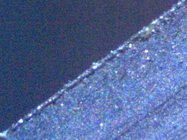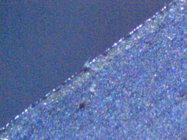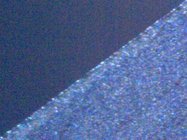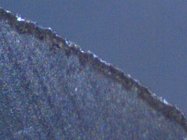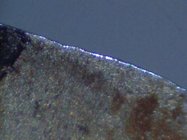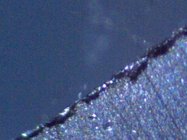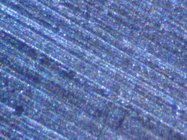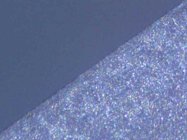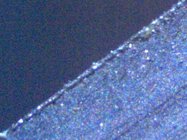odie
TOTW Team
- Joined
- Dec 22, 2006
- Messages
- 7,123
- Likes
- 9,883
After the Tom Wiesring article I started using 600 grit and really got it sharp.
600gt is the finest grit I'm aware of for grinding wheels. We must consider the practicality of grinding wheels with very fine grits. For one, they will be very slow to remove metal, when doing the entire bevel of a gouge. The only practical solution to this, would be two wheels, one of a fine, and one with a coarse grit.....the fine grit table set to a slightly different degree. ......Then, there is the consideration that a 600gt wheel will not be as sharp as would be 600gt honing by hand.....because of the single direction vs multiple directions consideration.
For me, I've been honing for so long, that it's second nature, and very quick. I can be back at the lathe in 30 seconds, or so.....and the edge will be starter fresh. To my way of seeing this, those who rejoice in the advantages of the exotic steels are not seeing this from another very important perspective. The edge will begin dulling immediately, no matter what the steel......and, if the edge dulls slower (which is the entire philosophy of buying the exotic steels in the first place) it becomes more difficult to make the decision of just when to sharpen.....or, keep turning. The whole reason we want a sharp tool, is to get a cleaner cut, a cut without tear-out (therefore eliminating the aggressive sanding requirements).....and, a 100% sharp tool is more capable of achieving that, than an 90% sharp tool. As the wood spins, we can't tell how well the cut is proceeding when we use our senses to "feel" the difference between 100% and 90% sharp.....but, we sure can tell the difference between 100% and 75% sharp. When I turn a bowl with the industry standard M2 steel, I may re-hone a dozen times and re-grind once, and to me, it seems like a great trade-off to maintain sharpness that ultimately produces a cut that requires less sanding. You just don't want to create tear-out, requiring you to re-do the surface, or sand the hell out of it!.....when you could have produced a better surface in the first place!
-----odie-----

